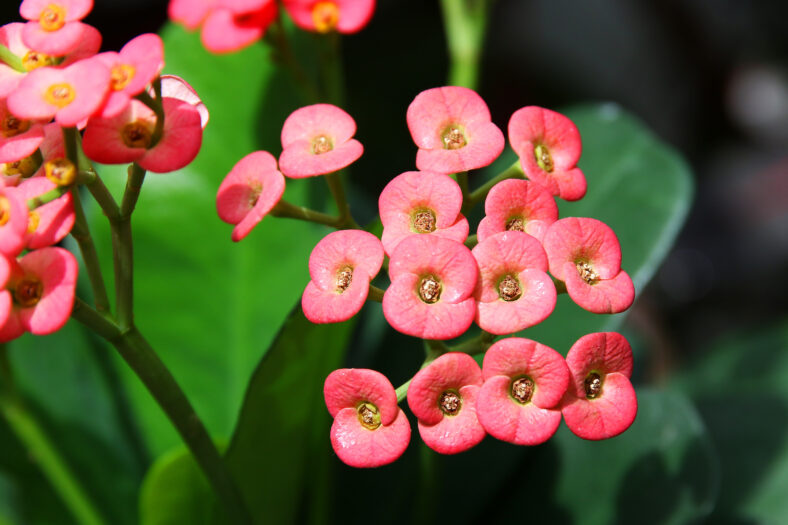How To Care For A Crown Of Thorns, Which Is Said To Bring You Good Luck And Protection

Crown of Thorns is a succulent tropical shrub that’s charmed gardeners for centuries.
Native to Madagascar, this hardy plant is celebrated for its resilience and is said to bring both good luck and protection. Plus, it offers nearly year-round blooms in vibrant shades of red, pink, yellow, or white.
While Crown of Thorns is slow-growing, reaching about two feet in height when kept indoors, its spiky green leaves still pack a visual punch. This succulent is also quite simple to care for: here’s how.
How To Care For Crown Of Thorns
Crown of Thorns actually prefers the same temperatures most people find comfortable, ideally between 65°F and 75°F. But even though it can tolerate cooler nights, you shouldn’t let the temperature drop below 50°F.
It handles low humidity levels well, too, a common issue in most homes during wintertime. That’s why Crown of Thorns is an adaptable houseplant choice.
In terms of soil, use a cactus potting mix to ensure proper drainage if you plan to grow this plant indoors. Additionally, the container should fit snugly around the root ball to prevent excess soil, which can hold too much water and lead to root rot.
Then, during the growing season, you can feed your Crown of Thorns with a balanced houseplant fertilizer. For the best results, dilute the fertilizer to half-strength and apply it every other time you water.
The most important care requirement for this variety is enough light exposure, as more sun will result in more blooms. Crown of Thorns thrives in direct sunlight and blooms when it gets at least three to four hours of daily bright light.

Sign up for Chip Chick’s newsletter and get stories like this delivered to your inbox.
So, placing your plant in a west-facing or south-facing window is recommended, especially in the colder months.
You won’t have to stress too much about watering, given this variety is a succulent and tends to be quite forgiving.
Simply water Crown of Thorns once the top inch of soil feels dry by soaking it thoroughly and letting any extra water drain away to avoid root rot. In the winter, you can water even less, as your plant will enter a semi-dormant phase.
Now, Crown of Thorns may be pruned to help maintain a neat shape, but be cautious of its sap, which can irritate your skin and eyes. Always make sure to wear gloves and wash off any sap with water.
You can prune as necessary to keep your houseplant compact. Just try not to remove any healthy buds.

Last but not least, while this variety is generally resistant to pests, it can occasionally attract mealybugs, thrips, and scale.
Fungal issues such as leaf spots, root rot, and botrytis may also occur. To prevent these diseases, allow your plant’s soil to dry out in between waterings.
More About:Gardening





